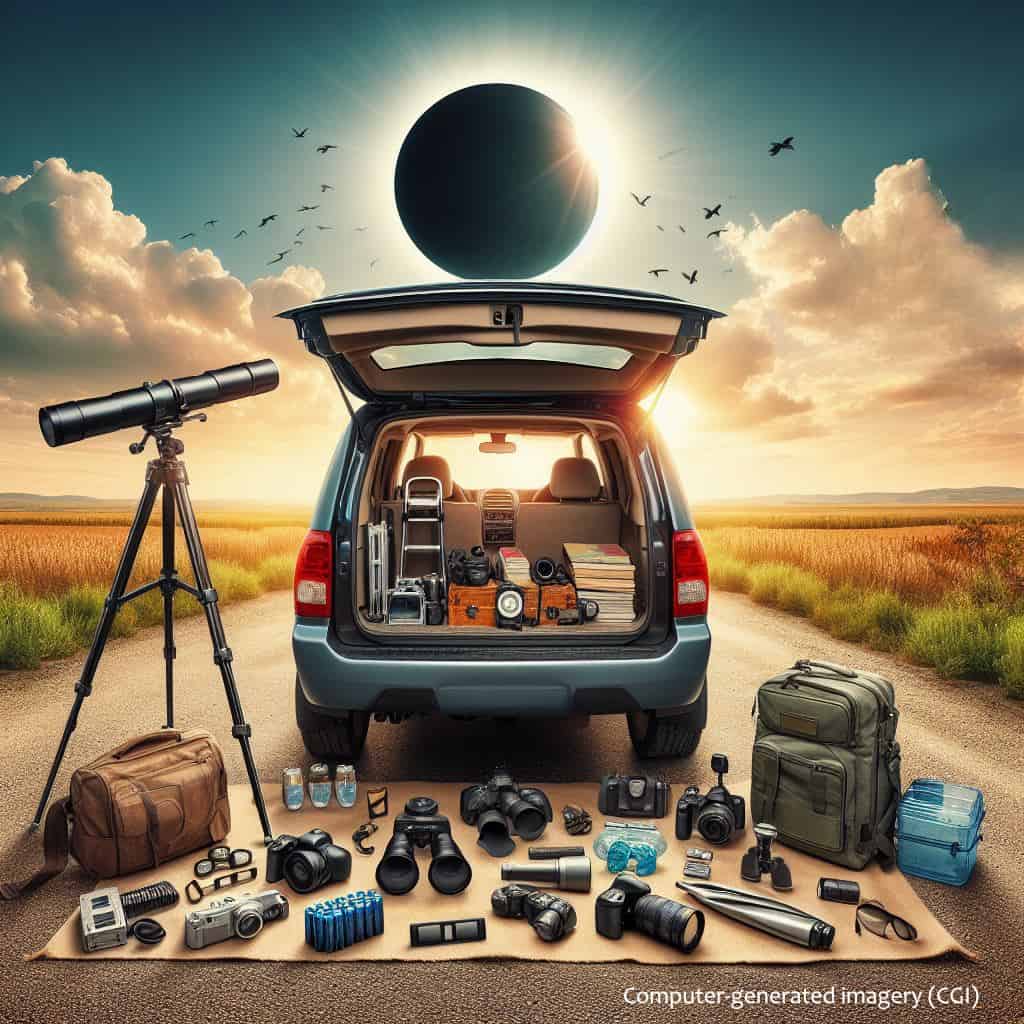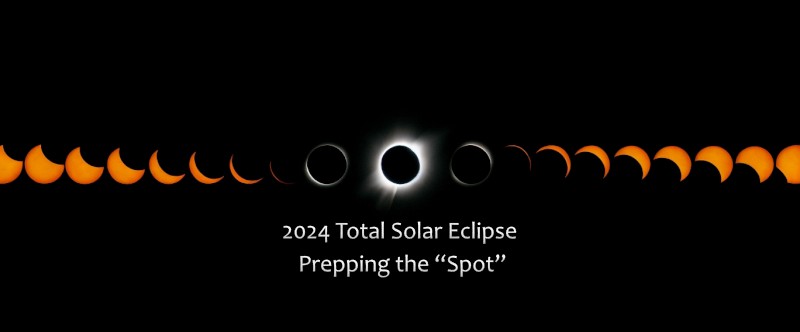This is the last installment in a series about the upcoming total solar eclipse of April 8, 2024. Villagers are very fortunate to be directly aligned with the path.
If you’re looking to experience something unique, the secret is going to be location – location – location. We are lucky to be in a gated community. While there will be lots of visitors with all the rentals booked up and many friends and family visiting residents, we will still have less influx than areas outside our gates.
When it comes to planning a location, many common areas, like Balboa Beach, parking lots, etc., will be crowded. So, if you want to avoid the crowds, find a more remote location. Remember, though, that while it might be easily accessible now, on “gameday,” traffic, roadblocks, etc., may make it difficult to get to. The minimum requirement for any location is where you can see the sun in the direction and altitude of the eclipse. In our case, in the village, a direction of 158°- 232° for the entire eclipse at an altitude of about 60°.
This is going tol be a unique opportunity for many people to see the only “convenient” total eclipse of their lifetime. For that reason, comfort and convenience should take a back seat for anyone wanting to experience a once-in-a-lifetime event.
An elevated location may provide the best vantage point giving you a view to see the shadow of totality coming. The shadow can be seen moving from the southwest across the ground at you. It is breathtaking.
Another phenomenon many people miss is what some call dancing fairies. After the eclipse goes total, where there is a flat surface, the shadow seems to dance and shimmer. The most common place to see this is on the hood or roof of a car. Look for it on any flat surface.
Once a location has been determined, preparation is needed to ensure everything goes smoothly on the day of the event. A checklist can help make sure you have everything in order in the days or even weeks before the eclipse. That way, you’ll avoid many potential problems on the big day itself.
Make a checklist of what is needed at the location.
- Include all necessary equipment (camera, lens, solar filter, tripod, batteries, memory cards, telescope, binoculars, etc. Everything needed to photograph or view the eclipse).
- Include any tools you may need.
- Include other items such as an umbrella, water, snacks, sunscreen, etc.
Prepare brief Eclipse Day notes on a clipboard or index cards.
- List times and location of the various eclipse phases for quick reference.
- List camera settings to be used for various phases.
- Do not extend center column on your tripod. For maximum stability set tripod as low as practical.
- Hang weight (water bottle, bag of rocks, etc.) from center of tripod or tape to legs.
- Any other notes you need at your fingertips
Practice, practice, practice
- Practice with the settings you plan on using.
- Practice acquiring a focus on the sun or moon and securing the focus with tape.
- Make sure you can remove the solar filter quickly and smoothly without altering the focus. The filter must be secure enough that the wind won’t blow it off.
Carefully pack up all your equipment.
- Set up all your equipment one last time.
- Note how long it takes to set up.
- Consult the checklist to make sure you have everything.
- Don’t remove anything once you’ve packed.
This is the last of the HSV Camera Club and Village Stargazers information articles on the solar eclipse. Next week will be an announcement of a face-to-face seminar to be held at the Coronado Community Center on March 13.
Reference skyandtelescope.org eclipse-photography-checklist by Fred Espenak
By HSV Camera Club and Village Stargazers

Click here to read “2024 Total Solar Eclipse – Other Viewing Options.”
Click here to visit the HSV Camera Club website.
Click here to visit the Hot Springs Village Stargazers Facebook Page.
Click here to visit the official Hot Springs Village POA Facebook Page.


